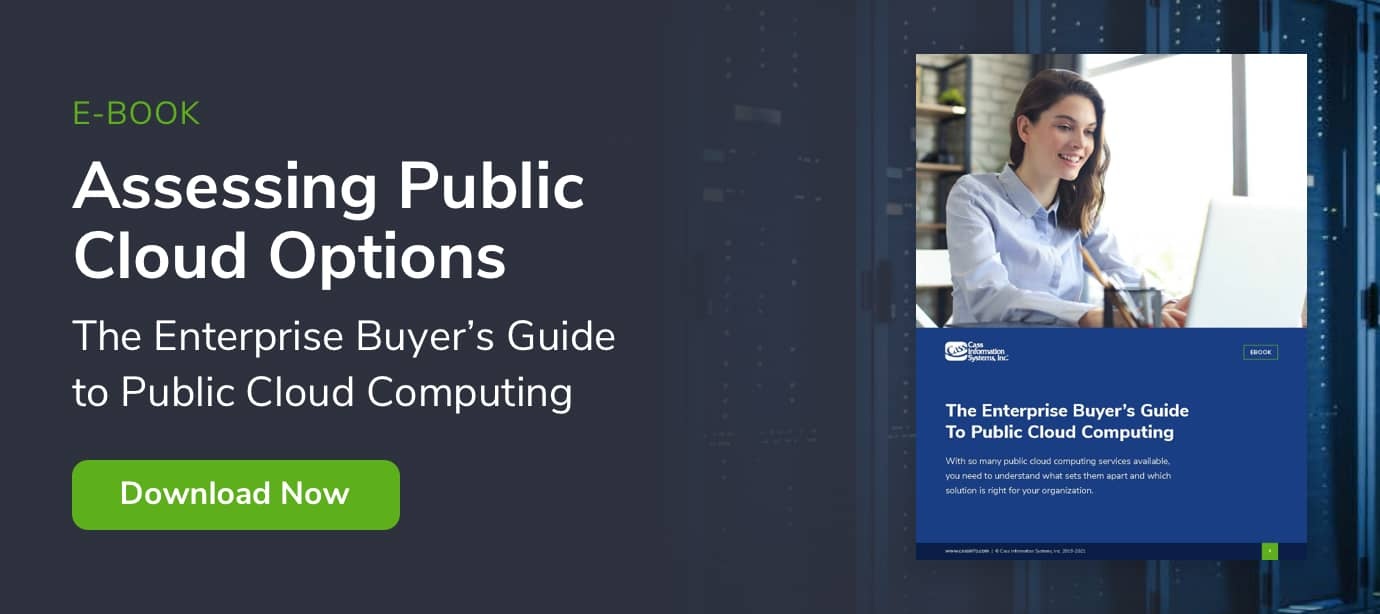Cloud asset management is a key component of cloud management services. It keeps track of every aspect of your cloud estate, managing the maintenance, compliance, and tracking of your cloud asset inventory.
In this blog, we'll explore the value of cloud asset management and the business benefits it can offer to your organization.
The Challenges of the Cloud
The list of businesses acquiring cloud-based applications grows daily. But when enterprises adopt cloud-based services, platforms, and interfaces without meaningful visibility and control, many are left without a firm handle on the complexity of their cloud inventory.
This can create an unclear picture of just how big their cloud estate is. Lack of visibility makes it harder to keep tabs on cloud infrastructure – leading to inventory inaccuracies, poor service performance, and disjointed cloud processes.
As enterprises invest a large quantity of time and money into their cloud-based IT, it's time to ask: why isn't there greater control and optimization of their valuable cloud assets?
The Value of Cloud Asset Management
Cloud asset management provides visibility and control of all the assets and infrastructure that make up your cloud environment. It's a crucial first step towards a better optimized, more secure cloud.
It enables your enterprise to effectively keep ‘track’ of your cloud estate while maintaining the smooth-running of your cloud infrastructure, for real-time visibility of your cloud inventory.
Considering cloud software's rapid adoption and the multitude of cloud providers, it's easy to see how businesses can become saddled with upsold infrastructure or a subpar cloud environment.
You can recapture independent control over your cloud environment, enabling your enterprise to refocus efforts towards optimizing and securing your cloud infrastructure.
The Key Benefits of Cloud Asset Management
Cloud asset management provides businesses with the ability to make better decisions, supported by valuable data.
When you align the long-term integrity of your cloud infrastructure (visibility, accuracy, and reliability) with your cloud management objectives, you build a stronger cloud framework, with minimized risks.
Here are three of the main benefits of cloud asset management:
1. Cloud Inventory Accuracy
A key advantage of cloud asset management is the ability to gain greater visibility over your cloud asset inventory. Cloud asset management systems can gather in-depth inventory information that can be used to make educated decisions about managing your assets in the most cost-effective manner possible.
Not only does this encourage your enterprise to make the most of your existing infrastructure
An accurate cloud asset inventory ensures your enterprise can optimize these measures with confidence, based on reliable data instead of guesswork.
2. Automation
Cloud asset management uses automated processing to instantly manage the discovery of your assets and provides real-time, up-to-date inventory information. Not only can automation reduce the time-consuming process of trawling through large amounts of data, but it also removes human error from cloud asset management – boosting the accuracy of your cloud management processes.
Additionally, automation enables your enterprise to become self-serving, placing control of your cloud estate back in your hands. By using a system that enables your employees to service your cloud infrastructure, you remove the unnecessary interference of your cloud provider. This provides you with greater transparency and visibility over your cloud expenses. For example, it can help you automatically track your cloud costs, and identify extraneous or unnecessary cloud spending that can be changed as required.
3. Security Assurance
Cloud asset management firms up your cloud security package – enabling you to keep track of your critical security measures with actionable assessments of potential risks and threats to your cloud infrastructure. Automated systems can fix vulnerabilities upon detection, without human intervention – ensuring your business is not left with critical security gaps.
Additionally, cloud asset management systems identify non-compliant cloud resources and shift them back into compliance immediately. Considering cloud compliance is one of the most vital legal requirements of cloud technology, it's important to have rigorous security and compliance checkpoints in place. Cloud asset management enables this, by automatically processing regulatory reviews of your cloud estate.
Improve Cloud Asset Management with Cass
Real control, monitoring, and management of your cloud infrastructure can only be achieved when you have meaningful visibility of your assets.
If you can't easily identify your cloud environment loose-ends, then your business may be left spending resources, time, and finances on unnecessary cloud assets.
You can minimize waste, optimize your spending, and start effectively monitoring your cloud asset inventory by choosing a cloud service expense management solution that works for you. Find out more by checking out our guide.


